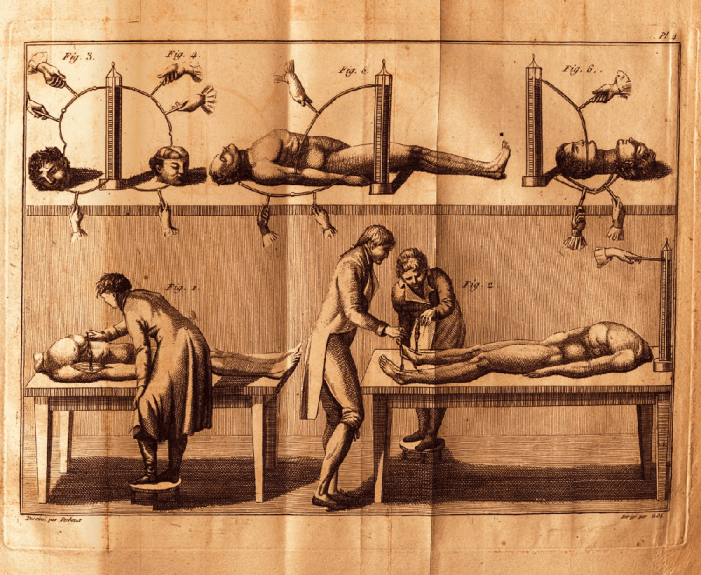Published anonymously 200 years ago in 1818, Frankenstein; or, The Modern Prometheus, has since proliferated, breeding monsters and nightmares on stage, screen, in comic books, and as Halloween costumes. Frankenstein (not a monster at all, but the name of his creator, the mad scientist Victor Frankenstein) is now common parlance, describing ambitious scientific schemes run amok.
In the two centuries since it first appeared, Frankenstein has been interpreted through many lenses: Freudian psychoanalysis; Marxism; gender, feminism, and queer studies; anti-slavery; and ecological disaster. But for Mary Shelley, its remarkable teenage author, Frankenstein was a morality tale filled with social and political commentary, isolation, and tragedy.
After the success of her novel, Mary Shelley answered a frequently asked question, “How I, then a young girl, came to think of…so very hideous an idea?”
“General views on the application of galvanism to medical purposes” by Giovanni Aldini, 1819. Image courtesy of The New York Academy of Medicine Library
On view through February 3 with the companion exhibit:
Vital Experiments: Science in 1818
a portrayal of science and experimentation at Middlebury College during the time of Frankenstein. Located on the Library Lower Level and in Special Collections.
Questions? Contact specialcollections@middlebury.edu
